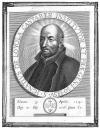Abstract
This paper pretends to offer a conceptual framework that enables the understanding of the Jesuit contribution to the architecture of the missions in Spanish America. The paper consists of six parts. The first of them opens with the commitment of the Compañía de Jesús to the Spanish monarchy: the missioner must convert the indigenous into subject of the king of Spain, into citizen of a municipality, provide him with the language of Castilla and make him a son of the Catholic Church. The second explains the double Jesuit offer to the American societies. Firstly, the -Republic of the arts- for the education through Indian schools and universities. Secondly, the "Christian Republic", whose ideological structure tried to guarantee the "production" of civilized people. This way, the entire process is studied, from settlement to implementation of culture. In a fourth part, in order to understand the Jesuit as the architect of a great missionary project. A fifth part is dedicated to explaining the tenacity with which the members of the Compañía de Jesús tried to enter American history through what resulted to be a project of building future; the willingness to bring the earlier experiences of Paraguay to the previously unknown lands in the heart of South America. Finally, the paper concludes with the Jesuit philosophy of art, since it is in the memory, the symbols and the formal language of every town and society that we find the instruments that enable us to analyze, to imagine, to believe, to create, to decide, to love and to resist.Apuntes is registered under a Creative Commons Attribution 4.0 International Public License. Thus, this work may be reproduced, distributed, and publicly shared in digital format, as long as the names of the authors and Pontificia Universidad Javeriana are acknowledged. Others are allowed to quote, adapt, transform, auto-archive, republish, and create based on this material, for any purpose (even commercial ones), provided the authorship is duly acknowledged, a link to the original work is provided, and it is specified if changes have been made. Pontificia Universidad Javeriana does not hold the rights of published works and the authors are solely responsible for the contents of their works; they keep the moral, intellectual, privacy, and publicity rights.
Approving the intervention of the work (review, copy-editing, translation, layout) and the following outreach, are granted through an use license and not through an assignment of rights. This means the journal and Pontificia Universidad Javeriana cannot be held responsible for any ethical malpractice by the authors. As a consequence of the protection granted by the use license, the journal is not required to publish recantations or modify information already published, unless the errata stems from the editorial management process. Publishing contents in this journal does not generate royalties for contributors.


